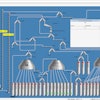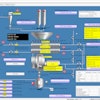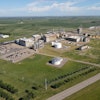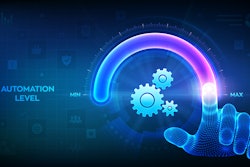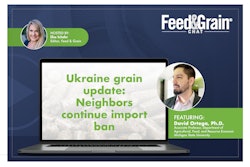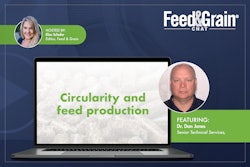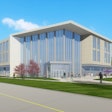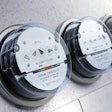Elise Schafer, editor of Feed & Grain:Hi, everyone, and welcome toFeed & Grain Chat. I'm your host Elise Schafer, editor ofFeed & Grain. This edition of Feed & Grain Chat is brought to you byWATT Global MediaandFeedandgrain.com. Feedandgrain.com is your source for the latest news,product and equipmentinformation for the grain handling and feed manufacturing industries.
Today, I'm joined on Zoom by Steve Buehne, sales territory manager forCPM Beta RavenHe's here to share how you can optimize feed facility operations withautomated control systems.Hi, Steve, thanks for joining me today!
Steve Buehne, sales territory manager, CPM Beta Raven:Thank you. I appreciate the opportunity to join this Chat.
Schafer:Absolutely. Now, can you start by sharing why it's important to stay up to date with automation systems? And what are the downsides of using outdated hardware and software?
Buehne: Well, I guess when it comes to keeping up-to-date, I think first about doing Windows updates — they're pretty important on keeping your system up-to-date when it comes tosecurity issues等等。所以,我肯定会推荐ning Windows updates on a regular basis. But also, keeping your network devices up to date not only fixes known issues, but it makes the network more secure by patching any known security issues in that system software.
But the other thing is, is havingimmutable backupsin case there is some kind ofransomware attack. So again, keeping software up to date, but also having good backups of your software. The other thing in reference to software is just your control system software like such as, like in our case, the mill master software, it's best to keep the software up to date. So it allows you to access any new features, but also prevents obsolescence. You don't want to fall too far behind to where you're several versions behind. If there's an issue with the system, you have to get the update before we can fix that new issue that occurs. So keeping your software up to date is very important both on the Windows side and your control system software.
The other thing in reference to updates is the hardware issues, you want to keep that to where it's easy to support your system. For example, if you have, let's say an example of a scale display that's still using something like device net or control net instead of what everybody's normally using — Ethernet — you could have an issue, a simple issue where maybe the scale technician needs to come out and put a new scale display in. But if you're still using that older technology, that board might not be available. So instead of being down for maybe an hour, now you're down for a day or multiple days because of using obsolete hardware. So yeah, it's it's very important to have both your software and hardware up to date.
Schafer:Yeah, those are some good reasons. Now, can you give me some examples of how automation systems reduce paperwork and data entry, and how this leads to operations improvements?
Buehne:嗯,有很多的事情可以做hen it comes to reducing paperwork and data entry. But let's start out in the receiving area as an example. We have a program called data exchange where we transfer data in and out of our system. And a lot of people don't think about it, but your purchase orders from your accounting system can be transferred automatically into your automation system, so that way when the load is received, you can cross reference to this purchase order. That handshake automatically occurs and when that load is received that goes back to your accounting system. So, here you have an exchange of data, all electronic, no one had to fill out any paperwork or enter any data say that that PO is received. No need for the buyer that's in a maybe office across the street or up the road to see if a load has been received, he'll be automatically notified.
Other ideas for reducing paperwork would be using the control system to log when magnets and so forth have been cleaned, or maybe the elevator monitoring data. I've seen many places where they have a logbook and then the operator is supposed to write down when they cleaned the magnets. Well, let the control system do that by monitoring when it's been opened. You can reset the timer log a control point note in the system, and maybe the operator can enter what he found on magnet. So again, keeping it all electronic, no paperwork and trying to reduce errors.
另一件事是做空气许可证报告。我seen where people have to manually log down their pressure, differential pressure sensors. Instead, you could have the control system monitor that and keep a report for you that's all electronic and can be printed out at any time. So just some simple areas there.
Drug reconciliation can be done electronically, as well. Maybe if you have a loss-in-weight microsystem and then you you're keeping track of your medications, a historian could see when you load the bin with a new bag, and log that, and you can monitor every batch that's been used out of it. So again, I've seen where people do drug reconciliations, and they have to handwrite all this down. Instead, the control system could be doing that for you.
Some other examples are loadout tickets. You can have your signature electronically put onto that ticket and that ticket can be emailed to the end user. Instead of printing it all out and making three or four copies, you can email a copy, and put a PDF copy in the accounting room. Even something as simple as the printing out sample bags labels. Most people have a handwritten label that they put there when they receive product or maybe when they ship product. This can be done through the control system where it just prints out a tag automatically, so the operator just grabs it, sticks it on there instead of handwriting it out, maybe even putting the wrong data on there — that is alleviated.
Some other ways to reduce data entry would be to use more of the data exchange feature, it's a way of exchanging data into our system and out. So for transferring your recipes, no need to keep those in your inventories, your usage and produced information can all be done electronically. Also, maybe you write it into a spreadsheet. I've seen people take their data that's printed out on a printout, and go to an Excel spreadsheet and key it in saying what they've made and some of their other [data]. Well, we actually have a way to export it directly to a spreadsheet, and you can do a sequel view, and it'll auto populate that spreadsheet. So, you connect that spreadsheet to the database and it populates it, so you don't have to key anything in. Maybe some other things are just getting your pellet process temperatures. Some places are making hygienic feed and they have to make sure that the temperature of the process is staying at a certain level for a particular run or feed type that can automatically be exchanged, and they don't have to handwrite any of that down.
But otherwise, another thing that I could see reducing paperwork is a cloud-based maintenance software. You know, it's become very popular. Imagine where the maintenance people get a work order through their mobile device and they can go out, do the maintenance, and scan the barcode and automatically update the system. So, again — no paperwork, reducing errors and easy tracking and so forth.
Schafer:Certainly sounds like some time saving benefits there. Now, what should facility managers consider for both their current needs and future needs when selecting an automation control system?
Buehne:Well, there are a lot of things there, but I think support is your biggest thing. You know, there are many companies out there that can build a control system, but who supports it now and into the future? And I would always ask around. There's a lot of other customers out there that are using systems. Ask around how the support is with the company. But to me that is most important.
Features, I would say, ask and make sure that they can follow the features that you need and I would even ask them, ‘Are there any features that other people are using that would be good for me?’ As we do this every day, we're putting in new control systems, updating systems, so we should be able to provide you with some ideas and some better ways of producing better results.
But you know, from a company, you want to find a company with good experience, plenty of experience and that can provide references that can say, ‘Hey, what are these guys like,’ but also just review your future IO needs. I mean, it's not hard to expand a control system, but it is kind of nice to prepare them. For example, if you're going to add another pellet line in the future, you want to make sure that you’ve got enough space for the IO, or network ports or server space, really, or are we going to need another workstation and so forth. It's nice to know that up front, but future IO requirements.
But the other thing is non-proprietary hardware. You want to make sure you have something that you can get parts at any nearby electronics parts supplier, that you don't have to buy from the control system vendor. If you're in an emergency, it's a Friday night, and you need a part, it's nice to be able to get it locally. So, those are some of the things that I would say need to be considered.
Schafer:Now also looking into the future with automation capabilities, how might artificial intelligence cloud-based systems and remote monitoring benefit grain and feed facility operators?
Buehne:Well, I would say cloud-based systems can be used to gather data from multiple facilities and integrate this data into a remote monitoring system so that the plant manager could, or really a division manager, could compare his facilities all in one location. So, remote monitoring can provide a dashboard to this division manager showing how each facility is doing on their throughput, maybe their downtime, and so forth.
Also, getting back to what I mentioned earlier, that cloud-based backup storage would be perfect for those immutable backups that are very important. And having them off-site is also important. But getting to a web API interface is also a newer feature that use a good way to transfer files in and out of our system via the web. This would replace that local transfer file system that everybody is normally used to. So again, using the cloud, using the web for those type of things.
But you mentioned artificial intelligence. I would think AI is going to be a big part of our future. I see a perfect opportunity where a system could self-tune itself using the parameters and the results from previous runs to tune up its batching system or its pelleting system. But I also could see, AI helping reduce operator mistakes by seeing abnormalities earlier in the process. Also improved plant efficiency, and provide basically better predictive maintenance data.
Schafer:Well, we certainly look forward to the development of that. Well, thank you so much for your insights today, Steve! And if you'd like to learn more about what Steve talked about here today, visitcpm.net.
That’s all for today'sFeed & Grain Chat. If you'd like to see more videos like this, subscribe to ourYouTubechannel.Sign upfor the Industry Watch daily eNewsletter or go tofeedandgrain.comand search forvideos. Thank you again for watching and we hope to see you next time!


